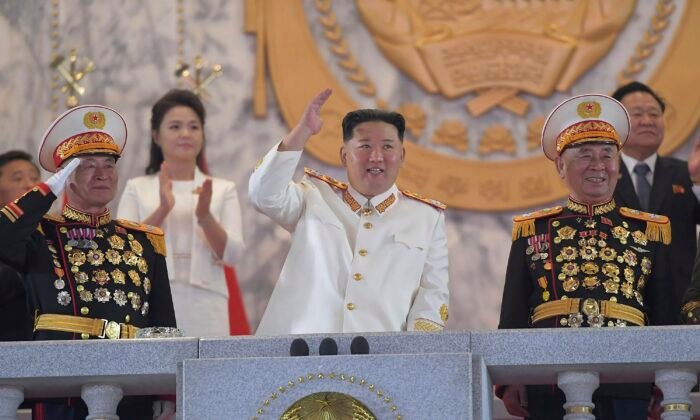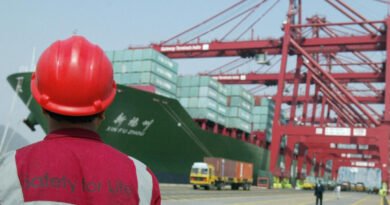Examining the Rising Global Tensions During Kim Jong Un’s Regime
North Korea recently tested several new strategic cruise missiles, rumored to be capable of carrying tactical nuclear warheads.
In recent months, North Korean leader Kim Jong Un has engaged in a series of actions that mark a significant departure from previous policies and rhetoric. These actions include an increase in missile tests, a stark redefinition of South Korea as an adversary, and symbolic gestures such as the proposed removal of language promoting “peaceful reunification” and “national grand unity” from the constitution.
Notably, the dismantling of the “Arch of Reunification,” a symbol of inter-Korean unity, underscores a clear pivot away from the conciliatory legacy of his father. The motivations behind Kim’s behavior are subject to various interpretations, ranging from attempts to escalate tensions on the Korean Peninsula and efforts aimed at undermining South Korea’s stability, to strategies designed to consolidate his family’s rule by diverting attention from domestic challenges.
The timeline of these developments traces back to November of last year, with North Korea’s launch of a reconnaissance satellite, provoking heightened alertness among South Korea, the United States, Japan, and others. In retaliation, South Korea suspended parts of the “September 19 Military Agreement,” a 2018 pact aimed at reducing military tensions between the two nations. North Korea, in turn, declared the nullification of several inter-Korean agreements.
The narrative continued into December, with the 9th Plenary Meeting of the 8th Central Committee of the Workers’ Party of Korea, where Kim branded South Korea the “most hostile country.” This rhetoric was further amplified in the new year when, during a military factory inspection, Kim explicitly labeled South Korea as the “primary enemy.”
In early January, North Korea intensified its provocations by launching over 60 artillery shells into a maritime buffer zone, followed by additional bombardments. These actions drew sharp criticism from the South Korean joint chiefs of staff, who denounced the artillery strikes as a direct threat to peace and stability in the region.
Mid-January saw further escalations with Kim’s proposal at the 14th Supreme People’s Assembly to demolish the “Arch of Reunification” and eliminate from the constitution any language related to reunification and reconciliation, effectively disbanding institutions aimed at fostering peaceful relations with South Korea.
On Jan. 24, North Korea tested several new strategic cruise missiles, rumored to be capable of carrying tactical nuclear warheads, in the Yellow Sea. This test, notably targeting the Yellow Sea instead of the Sea of Japan, occurred on the eve of a Chinese diplomatic visit to Pyongyang, leading to speculation about North Korea’s intentions towards China. The United States also increased its military activity in the region during this period by deploying three Navy aircraft carriers near the Korean Peninsula. The move was interpreted as a deterrent against both North Korea and China, given recent tensions.
In response to these developments, John Kirby, the Strategic Communications Coordinator of the U.S. National Security Council, confirmed at a press conference that the United States is vigilantly monitoring North Korea’s military activities, highlighting the international concern over Kim’s recent provocations.
Two prominent analysts in the United States raised alarms over North Korea’s recent activities. On Jan. 11, Robert Carlin, a seasoned former CIA analyst, and Siegfried Hecher, a noted nuclear scientist, expressed grave concerns on the news analysis platform 38 North, suggesting that Kim might be contemplating a war strategy reminiscent of his grandfather’s actions in 1950.
“We believe that, like his grandfather in 1950, Kim Jong Un has made a strategic decision to go to war,” stated the beginning of the article. They argue that Kim has decisively shifted away from any aspirations of reconciliation and reunification with South Korea, framing the North and South as belligerent states.
On Jan. 25, U.S. government officials, requesting anonymity, told the media that North Korea could launch a deadly attack on South Korea within months. They pointed out that Kim’s recent comments and continuous missile launches have gone beyond the previous pattern of pressuring South Korea. However, they added that there are currently no signs that a full-scale war is imminent.
The 2010 Yeonpyeong bombardment was a North Korean artillery attack on Yeonpyeong Island, South Korea, on November 23, 2010. It resulted in the deaths of four South Koreans, including two civilians, and caused significant damage to the island’s infrastructure. It marked one of the most serious escalations of tensions on the Korean Peninsula since the end of the Korean War in 1953.
On the same day, Jon Finer, the deputy national security advisor in the Biden administration, speaking at an Asia Society forum in Washington, characterized North Korea as having “chosen to continue going down a very negative path.”
Despite the heightened tensions, some experts believe that North Korea’s actions are not aimed at starting a war.
“Risking his entire regime on a potentially cataclysmic conflict is not on-brand for the North Koreans. They have proven to be ruthlessly Machiavellian,” said Christopher Green, a North Korean affairs analyst at the Crisis Group, a think tank based in the Netherlands.
Mr. Green also noted that North Korea often postures aggressively to compel the West into dialogue, albeit against a backdrop of internal instability and political pressures that could render the regime unpredictably hazardous.
An editorial by the South Korean publication Dong-a Ilbo on Jan. 17 suggested that Kim’s provocations might be driven by the strategic advantages afforded by his nuclear arsenal and the benefits gleaned from arms dealings with Russia.
The piece further speculated that the timing, coinciding with forthcoming parliamentary elections in South Korea and the U.S. presidential election, could be opportunistically chosen to influence international dynamics. However, at its core, the editorial suggests Kim’s actions aim to deflect domestic discontent onto foreign adversaries.
Source link




